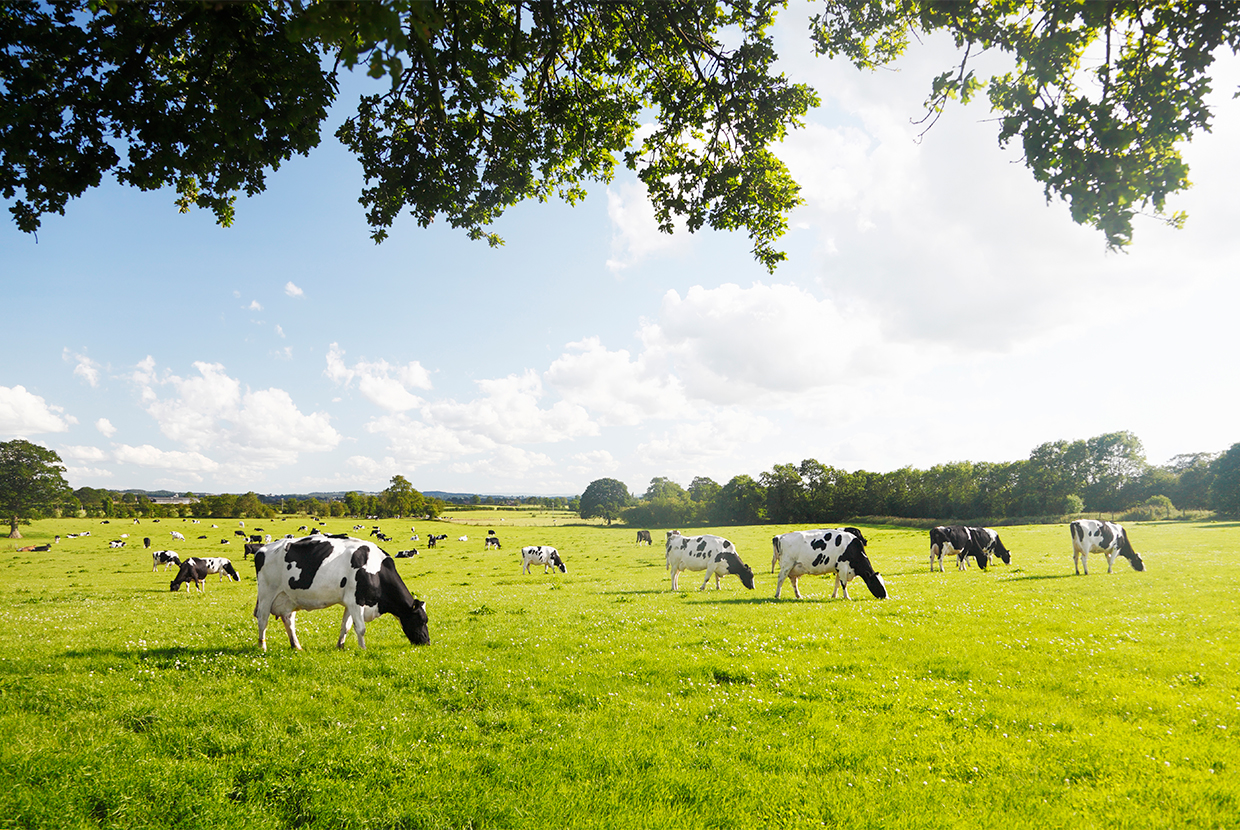In March, Chinese premier Li Keqiang was presented with an All Blacks jersey at a lunch for more than 500 business luminaries in Auckland.
Li was in New Zealand to discuss an upgrade of the free trade agreement the two countries signed in 2008, but also to discuss possible Chinese investment in infrastructure projects.
“You can’t visit New Zealand without getting one of those,” says Philip Turner, director of global stakeholder affairs at Fonterra, New Zealand’s largest company, in reference to the hallowed rugby shirt.
Turner was at the state banquet thrown for Li and, as he speaks on the phone, is on his way to meet a trade delegation from Japan. Asia is a huge market for Fonterra, a co-operative which is responsible for 30% of the world’s dairy exports.
Fonterra is a truly global superpower in a sector in which New Zealand punches well above its weight. For a nation of just under 4.5 million, New Zealand’s dairy exports performance is startling.
It is the world’s largest exporter of butter, churning out 550,000 tonnes in 2016, more than double the amount of the EU and almost 20 times more than neighbouring Australia.
The country is second only to the EU in cheese exports, is by far the largest exporter of dry milk powder products, and is the fourth-largest exporter of milk. It helps that there are more than twice as many cows as people in New Zealand, but experts trace the success of the industry to an economic catastrophe that happened more than 40 years ago.
These days, it’s hard to open a newspaper or a webpage without being confronted with the word “Brexit”. Many prophesise a collapse in the UK economy, while others ponder whether the EU can survive without one of its largest and most economically important members. In 1973, however, it was the UK’s ascension to the European Community, as it was then known, that had a disastrous effect on New Zealand’s economy.
In 1970, the UK took in over 90% of New Zealand’s butter exports and 75% of its cheese. With entry to the common market, however, came membership of the common agricultural policy (CAP), which effectively excluded New Zealand’s (and anyone else’s) agricultural products from the UK market.
The shock left New Zealand in an economic mire through the 1970s and much of the 1980s. The EU and US agricultural markets essentially cartelised the price of livestock and produce. New Zealand desperately sought new export markets, forging agreements with the Soviet Union and China – international pariahs at the time.
A free trade agreement signed with Australia in 1983 was a sign of things to come: New Zealand became an aggressive advocate of free trade and embarked on a domestic mission to remove subsidies and tariff barriers for imports at its own borders – a stance that caused short-term shocks in the main export sectors.
“Leading up to the changes, we found that the government was broke. We had to take drastic action. Our farmers used to get support for producing, then all the support was taken away, because the country couldn’t afford it. If that was good enough for the farmers, manufacturers had to have the same trading conditions, so tariffs in the manufacturing sector were reduced,” Catherine Beard, executive director at Export NZ, a lobby group, tells GTR.
“It was probably a bit brutal at the time. In hindsight you’d probably want to smooth it out over a longer period. But the other side is, you need political and public support: sometimes you just have to do these things and take the hard medicine.”
Turner at Fonterra recalls it as an incredibly tough time for farmers, but says the track record of the dairy industry since the 1980s shows that the beleaguered government in situ was right. Opening the floodgates made farmers resilient and competitive – they had to fight and evolve to compete with goods from other parts of the world. Now New Zealand’s agricultural products are synonymous with quality, and its beef, lamb and dairy products are widely consumed the world over.
“We have zero subsidies for any agriculture in the economy and we are the only economy to do so,” he explains. “We have very little government intervention, a fully floating currency and farmers only get what they can make on the market. It sounds quite tough, but if you talk to farmers today you’ll find hardly anyone that would want to go back. Since the 1980s if you look at the record of the dairy industry, it’s been tremendously successful.
“It enforces competitiveness right down to the farmers’ level, it takes decision-making to the farmer, and the farmer has to respond to prices. Rather than waiting for the government to protect them, the best approach is to embrace the market, make decisions yourself on farm and manage the business to be competitive, and that’s the best recipe to be a success in the long term.”
The UK now imports 0.026% of New Zealand’s dairy products, while China accounts for about a quarter. It’s little wonder Brexiteers are pointing to New Zealand as an example of how a relatively small nation can survive outside of an economic union.
Asia’s changing habits
In looking at New Zealand’s success story, it’s impossible to ignore the demographic shift that has taken place in Asia over the past three decades. Countries like South Korea and China have used manufacturing and exports to lift millions of people out of poverty at an unprecedented rate. China’s urban population has grown by more than 500 million in the past 30 years and, according to Tom Miller’s 2012 book China’s Urban Billion, is set to swell by a further 300 million by 2030.
“The modern consumer, whose parents might have been living without electricity, on a dirt floor in rural China, has a white-collar job in Shanghai and their lifestyle is very similar to Europeans. They catch the subway to work, buy a custard tart and have a latte for breakfast, and a pizza for dinner: they’ve joined the global consuming classes,” says Turner.
David Mitchell is the export sales manager at Quality Foods Southlands (QFS), an Invercargill-based producer of French-inspired foods such as croissants, pastries and sauces – all made using New Zealand dairy. The company was established as a family bakery at the beginning of the 20th century and started exporting around the time of New Zealand trade’s ‘Big Bang’ 30 years ago. Now it has mature export business in Hong Kong, Japan and China, and has ridden the crest of the growing wave of the middle classes around Asia.
“Demographics are always a key consideration when identifying and developing markets and our decision to enter China certainly took into account the growth in spending power and changing consumer food purchasing trends, especially in the more affluent eastern provinces and so-called tier-one cities. That increase in spending power is moving westward and has influenced our decision with regard to identifying in-market partners with proven direct or indirect distribution reach across China,” he explains.
Travelling around Asia, you will notice a distinct mark-up in the price of meat or dairy goods that carry the New Zealand or Australia branding – the countries have both worked hard at establishing an image of quality. In 2008 in Korea, 100,000 people took to the streets to protest the reversal of a ban on US beef imports. They were spooked by an earlier bovine spongiform encephalopathy (BSE or ‘mad cow disease’) outbreak among US cattle. Many Koreans still refer to US beef as “crazy cows”. Incidents like this help reinforce the image of quality that marks farmed goods from Australia and New Zealand in Asia.
Kevin Parish is the former trade commissioner of New Zealand, and now runs Primary Collaboration NZ, a Shanghai-based organisation that helps market New Zealand brands in China. He reckons that the importance of good branding in the region cannot be overstated.
“At a country level, New Zealand is competing with all other nations in China. This is an intensely competitive market and countries and brands must invest time, resources and energy to be successful here. We leverage the unique country brand positioning in China and this strongly resonates with the consumers [who are] looking for safe, traceable and healthy products,” he says.
Borderless trade
That New Zealand has a favourable trading relationship with China certainly helps. In 2008, it became the first country to sign a free trade agreement with the world’s largest trading nation – a huge coup. Li’s recent visit represents a deepening of ties – China is looking to strengthen its grip on Asia Pacific geopolitics and trade and New Zealand is perhaps the most open advocate of free trade in the region.
Along with Brunei, Chile and Singapore, it was one of the Pacific (P) 4 members that instigated the Trans-Pacific Partnership (TPP). The government is a strong voice in negotiations over the Regional Comprehensive Economic Partnership (RCEP), too.
These mega-deals attract a mixed reaction from Kiwi trade figures. Parish thinks the government has done “an excellent job” in putting New Zealand in the forefront of negotiations. Mitchell thinks that it is “absolutely critical” that a country as small as New Zealand is able to get access to larger markets and “compete on a level playing field”. Beard at Export NZ, meanwhile, says the collapse of the TPP is “hugely disappointing” for exporters, adding that “on our own, we don’t have the negotiating power – we’re just not that important”.
If there’s one company that does carry clout on the international market, however, it’s Fonterra. It’s been reported that the US dairy lobby feared opening its markets through TPP precisely because it didn’t want Fonterra’s high-grade products gaining low-tariff entry to the US. Unsurprisingly, Turner is not supportive of the deal.
“We didn’t think that the TPP was a good deal for dairy at all. It’s a minority view in New Zealand because most other sectors tend to benefit much more than dairy, like meat, fruit and wine. In dairy, we are much less excited because we would have access to 3 to 4% maximum of the dairy market at the end of the 35 years of full implementation, in Canada, the US and Japan. It’s very hard to see that as anything approaching free trade.”
Turner also has reservations over RCEP – roundly considered a watered-down version of the TPP. But with or without these trade deals, New Zealand will continue to overachieve in the dairy sector. It’s difficult to think of a greater success story for a country of its size.
That is, of course, until you start delving into rugby union history…
A bank’s perspective
Reuben Tucker, the head of transaction banking for Australia and New Zealand at ANZ, talks about recent trends in the trade banking space in New Zealand.
GTR: What have been the major trends in New Zealand’s trade finance markets over the past 12 months?
Tucker: New Zealand customers over the last 12 months have been increasingly focused on using trade finance solutions to help drive greater efficiency in the use of working capital. At the same time they are focused on reducing operational costs through leveraging an increasingly digital trade environment to reduce complexity.
GTR: Is the market banked adequately, and do traditional trade finance banks face competition from non-bank lenders?
Tucker: Strong capacity exists in the market for New Zealand customers’ core trade finance requirements. In areas where capacity has been limited there have been high levels of support from the New Zealand Export Credit Office. We have seen less impact from non-bank players here compared with other markets, but they are sending the industry a very clear signal about how we innovate to ensure that we are constantly adapting to customer needs.
GTR: Fintech is a huge buzzword around Asia Pacific trade finance: has there been much take-up in New Zealand?
Tucker: New Zealand has a small yet rapidly growing fintech community and there is an increasing number of opportunities to take developments such as blockchain and apply them to solutions in the trade arena, potentially significantly reducing complexity and streamlining the processes involved. We are working closely with our New Zealand trade customers to help them digitise their trade transactions and reduce operational costs and risk from their businesses. Over 50% of our trade business for New Zealand customers is now transacted digitally.






